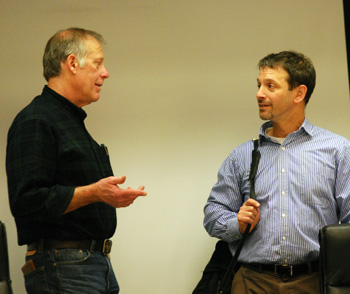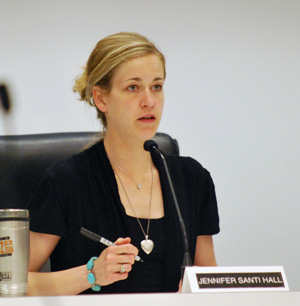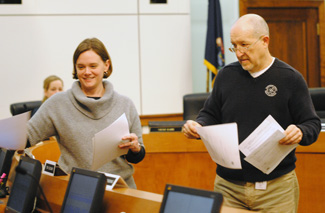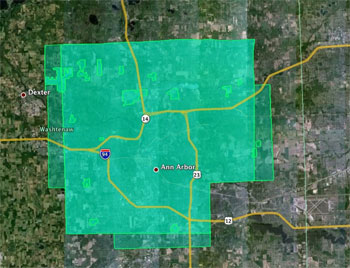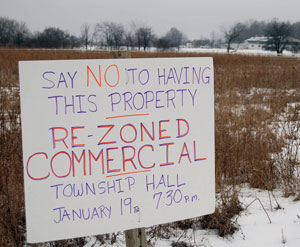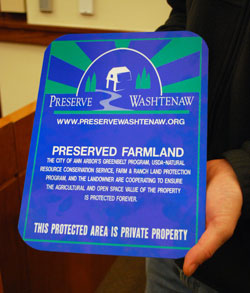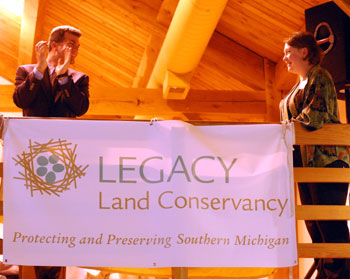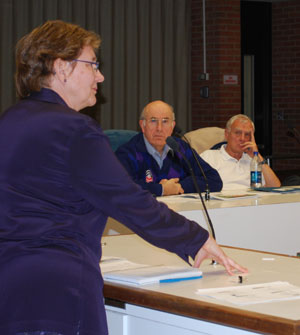County Working on Farmland Preservation
As the Washtenaw County parks and recreation commission moves closer to making its first decisions about farm properties to include in its land preservation program, the county board of commissioners got an update on the process at its April 5 working session.
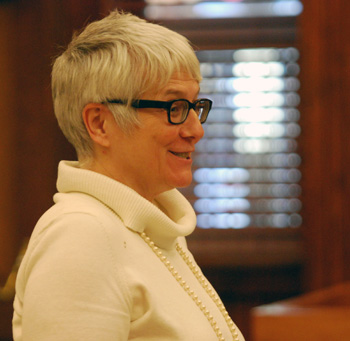
Susan Lackey, executive director of the Legacy Land Conservancy, updated commissioners about Washtenaw County's farmland preservation efforts at an April 5, 2012 working session. (Photos by the writer.)
Susan Lackey, executive director of the Legacy Land Conservancy – an Ann Arbor-based nonprofit that’s under contract to help manage the program – told commissioners that about $1.6 million is available to preserve farmland, using a portion of proceeds from the natural area preservation millage renewed by voters in November of 2010. That 10-year, 0.25-mill countywide tax also funds the acquisition of natural areas and land preserves.
Prior to 2010, the natural areas ordinance allowed for outright acquisition of land, but not for the purchase of development rights (PDR). PDR is a common mechanism for protecting farmland, letting landowners keep their property for farming but preventing – via a conservation easement – its development. In May of 2010, the county board approved an ordinance revision that incorporated farmland into the county’s natural areas preservation program and clarified the use of PDR for that purpose.
The county received 57 applications for its first round of potential deals, Lackey reported. That list has been narrowed down to seven parcels for final consideration, covering 1,100 acres. The locations of the parcels won’t be released until a final vote by the parks and rec commission. That vote will be taken when the deals are ready to close. That’s likely to happen later this year.
Yousef Rabhi was among the commissioners who praised the program, noting how it ties in with the food policy council that the county board recently created, as well as the food-related business incubator and job training program – called Seeds for Change – focused on the eastern part of the county. Rabhi serves on the Agricultural Lands Preservation Advisory Committee (ALPAC), which makes recommendations to the parks and rec commission about farmland deals.
The April 5 working session also included a briefing on the county’s community corrections unit. This report focuses just on the farmland preservation update. [Full Story]




